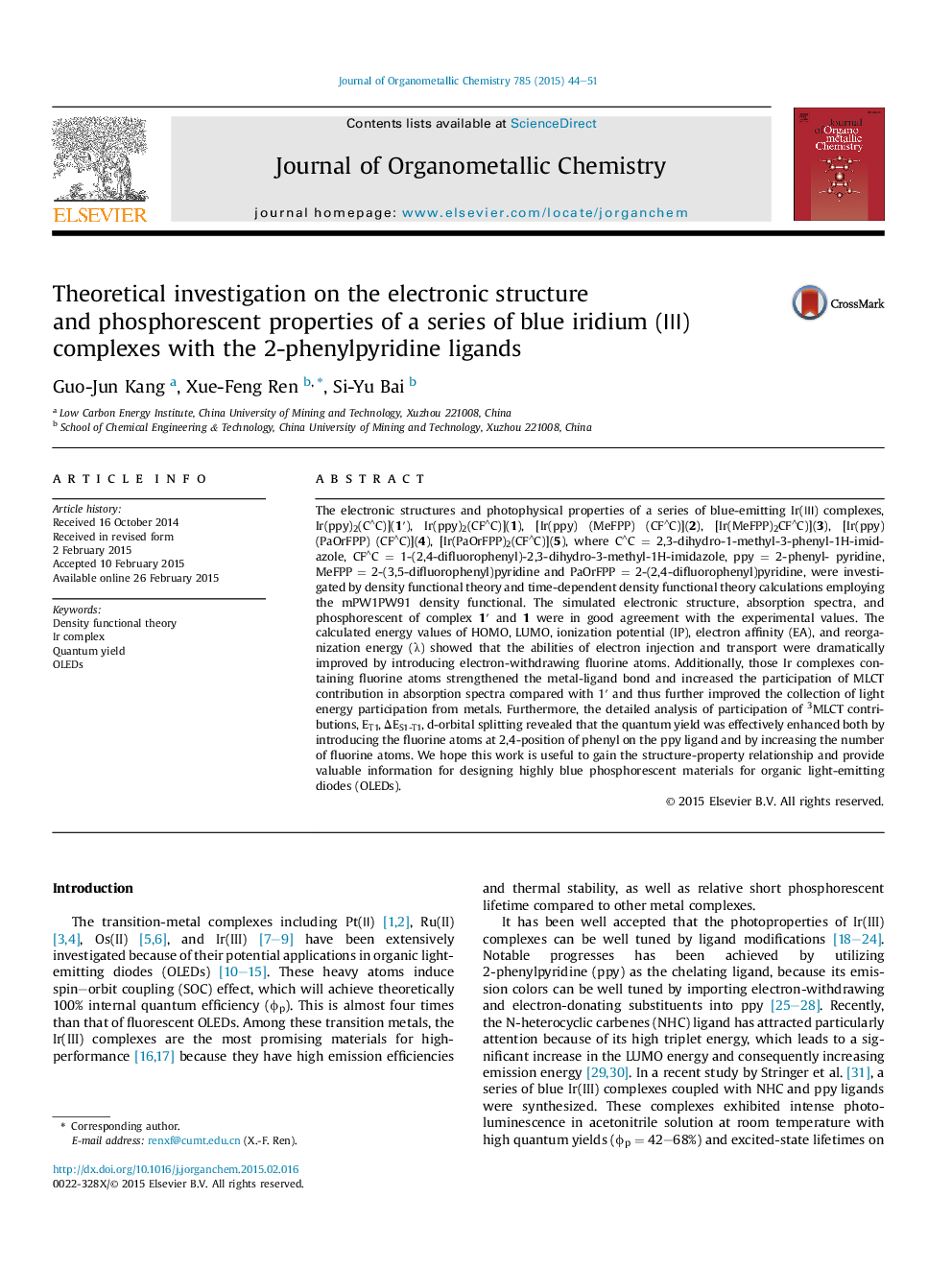| کد مقاله | کد نشریه | سال انتشار | مقاله انگلیسی | نسخه تمام متن |
|---|---|---|---|---|
| 1320989 | 1499857 | 2015 | 8 صفحه PDF | دانلود رایگان |

• Iridium (Ⅲ) derivative with fluorinated substituted at ppy and NHC ligand were studied.
• The electron injection and transfer abilities were enhanced by implying the F atoms.
• The phosphorescent quantum yield of these Iridium (Ⅲ) derivatives were investigated.
The electronic structures and photophysical properties of a series of blue-emitting Ir(Ⅲ) complexes, Ir(ppy)2(C∧C)](1′), Ir(ppy)2(CF∧C)](1), [Ir(ppy) (MeFPP) (CF∧C)](2), [Ir(MeFPP)2CF∧C)](3), [Ir(ppy) (PaOrFPP) (CF∧C)](4), [Ir(PaOrFPP)2(CF∧C)](5), where C∧C = 2,3-dihydro-1-methyl-3-phenyl-1H-imidazole, CF∧C = 1-(2,4-difluorophenyl)-2,3-dihydro-3-methyl-1H-imidazole, ppy = 2-phenyl- pyridine, MeFPP = 2-(3,5-difluorophenyl)pyridine and PaOrFPP = 2-(2,4-difluorophenyl)pyridine, were investigated by density functional theory and time-dependent density functional theory calculations employing the mPW1PW91 density functional. The simulated electronic structure, absorption spectra, and phosphorescent of complex 1′ and 1 were in good agreement with the experimental values. The calculated energy values of HOMO, LUMO, ionization potential (IP), electron affinity (EA), and reorganization energy (λ) showed that the abilities of electron injection and transport were dramatically improved by introducing electron-withdrawing fluorine atoms. Additionally, those Ir complexes containing fluorine atoms strengthened the metal-ligand bond and increased the participation of MLCT contribution in absorption spectra compared with 1′ and thus further improved the collection of light energy participation from metals. Furthermore, the detailed analysis of participation of 3MLCT contributions, ET1, ΔES1-T1, d-orbital splitting revealed that the quantum yield was effectively enhanced both by introducing the fluorine atoms at 2,4-position of phenyl on the ppy ligand and by increasing the number of fluorine atoms. We hope this work is useful to gain the structure-property relationship and provide valuable information for designing highly blue phosphorescent materials for organic light-emitting diodes (OLEDs).
To establish the structure-properties of a type of Ir complexes, F groups are implying on 2-phenylpyridine (ppy). From the analyses of geometrical structure upon excitation, participation of MLCT/3MLCT transition, singlet-triplet splitting energy, Δddocc and Δdd*, it is found complex 5 has higher quantum yield than other complexes.Figure optionsDownload as PowerPoint slide
Journal: Journal of Organometallic Chemistry - Volume 785, 1 June 2015, Pages 44–51